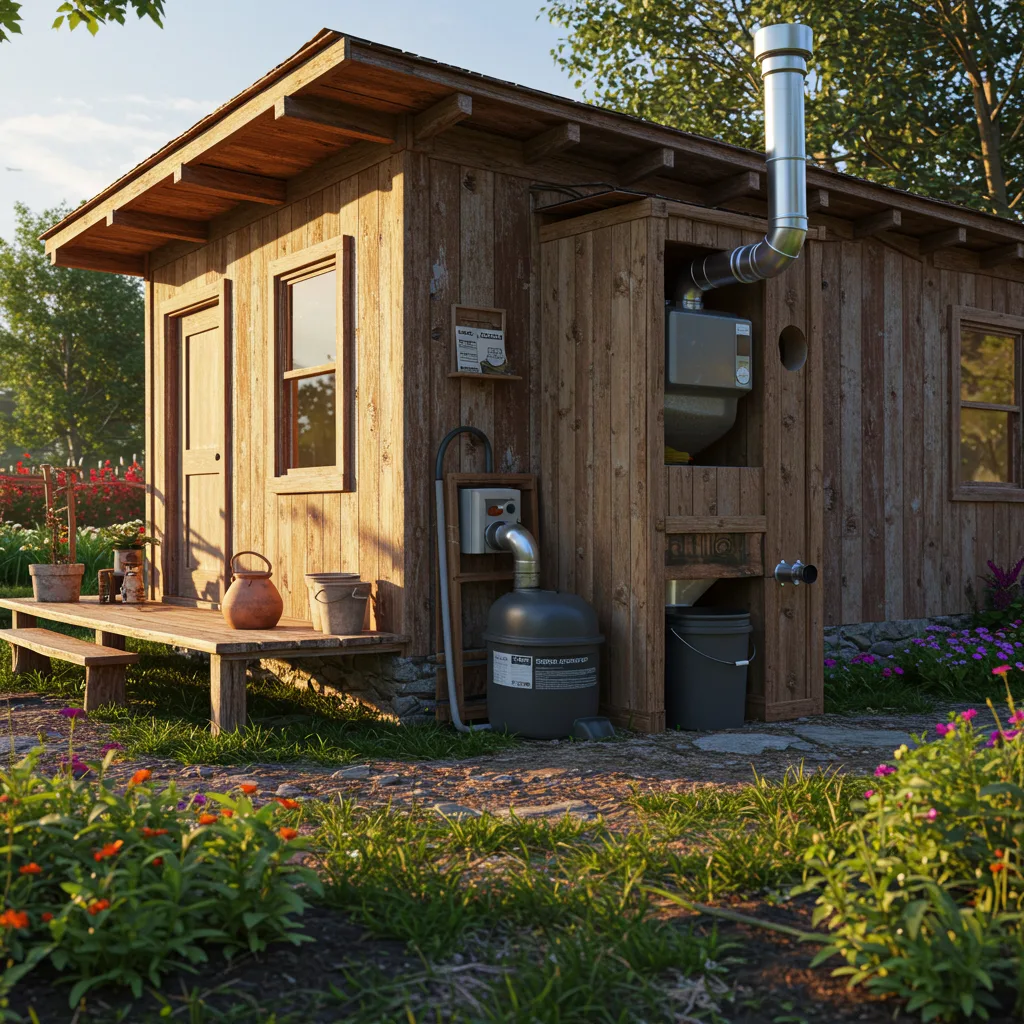DIY Composting Toilet: Off-Grid Water Conservation for 2025
In 2025, water conservation is more critical than ever, with the U.S. facing drought conditions across 40% of its regions, per the NRDC. A DIY composting toilet offers an off-grid solution that slashes water use—traditional toilets account for 30% of household water, or about 100 gallons daily, according to the EPA. Perfect for eco-conscious dwellers, this beginner-friendly project ties into your interest in sustainable living, complementing posts like rainwater harvesting and greywater systems. Built for EcoDweller.com, this guide walks you through building, maintaining, and integrating a composting toilet into your home or cabin, saving water and enriching your garden.

The Case for Composting Toilets in 2025
With water scarcity driving innovation, composting toilets recycle waste into fertilizer, using no water compared to the 1.6–7 gallons per flush of standard models. The USGS highlights a 20% increase in water stress in 2024, making this a timely upgrade. It’s ideal for off-grid living, tiny homes, or even urban backyards, aligning with your focus on practical eco-solutions.
Why Choose a DIY Composting Toilet?
- Water Savings: Eliminates flush water, saving hundreds of gallons monthly.
- Off-Grid Ready: Perfect for remote or sustainable homes.
- Garden Boost: Produces nutrient-rich compost for plants.
- Cost-Effective: Low initial investment with long-term benefits.
- Eco-Friendly: Reduces sewage and water waste.
Step-by-Step Construction Guide
Building a DIY composting toilet is straightforward with basic tools and materials. Here’s how to get started.
Gathering Materials
You’ll need a 5-gallon bucket ($10 from Home Depot), a toilet seat ($15), sawdust or peat moss ($5/bag), and a ventilated container for compost ($20). Check EPA guidelines for safe materials to ensure compliance.
Assembling the Base
Attach the toilet seat to the bucket lid with screws, ensuring a snug fit. Drill a 2-inch hole in the lid for ventilation, connecting it to a PVC pipe ($5) that vents outside. This keeps odors at bay, a tip I picked up from off-grid enthusiasts.
Setting Up the Composting Chamber
Place the bucket in a stable box or stand (DIY with $10 wood from Lowe’s) for comfort. Add a layer of sawdust to start the composting process, which absorbs moisture and kickstarts decomposition.
Installing Ventilation
Extend the PVC pipe to an exterior wall or window, adding a $5 screen to keep pests out. The USGS recommends good airflow to prevent methane buildup, ensuring safety.
Adding a Compost Bin
Link a separate bin under the bucket via a slide-out tray (DIY with $10 metal) to collect finished compost. Empty it every few months into your garden, tying into composting tips.
Testing and Adjusting
Use the toilet, adding sawdust after each use. Check for odors or excess moisture weekly, adjusting ventilation or adding more absorbent material as needed.
Maintenance and Safety
Keep your system running smoothly with regular care. Turn the compost monthly with a $10 shovel from Home Depot to aerate it, per EPA advice. Empty the bin when it’s 2/3 full, letting it cure for 6 months before garden use. Check local regulations via your state’s health department to ensure legal compliance.
Practical Tip
Use a $5 thermometer to monitor compost temperature (aim for 130-160°F) to ensure proper breakdown.
Cost and Savings Breakdown
| Component | DIY Cost | Professional Cost | Annual Savings |
|---|---|---|---|
| Bucket & Seat | $25 | $150 | $200 (water) |
| Ventilation & Bin | $30 | $200 | $50 (sewage) |
| Materials | $10 | $50 | $30 (compost value) |
Total DIY cost: $65, with potential annual savings of $280, making it a smart investment.
Real-World Success
A Colorado family installed a DIY composting toilet in 2024, saving 36,000 gallons of water yearly and using the compost for a vegetable garden. They estimate $250 in savings, proving its viability for sustainable living.
Addressing Common Concerns
Worried about smell? Proper ventilation eliminates it. Space issues? A compact design fits small homes. Legal hurdles? Most states allow composting toilets with permits—check with EPA or local codes.
Frequently Asked Questions
Is It Safe?
Yes, with proper maintenance and curing, per USGS standards.
How Much Water Do I Save?
Up to 36,000 gallons annually, depending on usage.
Can I Use the Compost?
Yes, after 6 months, for non-edible plants initially.
Do I Need a Permit?
Check local regulations—some states require approval.
How Long Does It Last?
With regular emptying, a system can serve a household for years.
Enhancing Your Eco-Setup
Pair with rain barrels or solar panels for a full off-grid system. Explore green investments to fund upgrades.
Conclusion
A DIY composting toilet is a game-changer for off-grid water conservation in 2025, offering savings and sustainability. Follow this guide, start small, and grow your eco-impact. Visit EcoDweller.com for more, including trends. Ready to build? Share your progress below!

